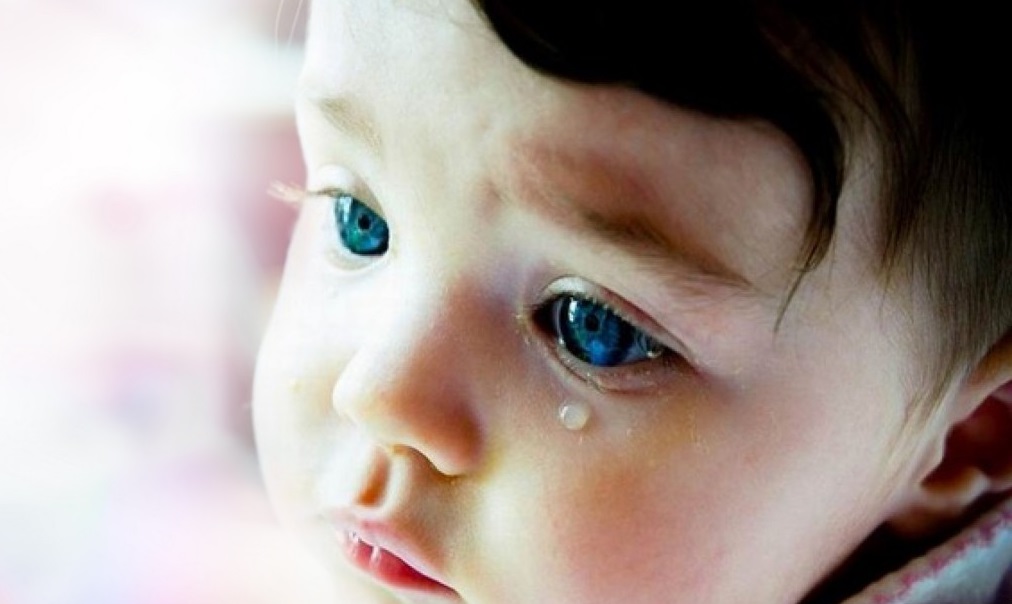Your heart cries when your baby cries. What you want most is a way to stop the tears. So you check that your baby’s diapers are dry, check that clothes are comfortable, and cuddle and nurse him/her. You do whatever you can to stop the tears and get back a smile. But at some point, your baby may cry without tears. This could leave you wondering when babies get tears?

When Do Babies Get Tears?
At birth and through the following weeks, your baby’s tear ducts will still be developing. For this reason, it is common for baby to cry without tears in the first weeks or even months. Some babies' tear drops appear as early as after the second week. However, this can vary, and it is normal for babies’ tears to show up when they are 1-3 months old.
But Should You Be Worried If Your Baby Continues to Cry Without Tears?
A baby crying without tears is not a cause for alarm unless there are other symptoms. While newborn babies’ tear ducts produce tears in the second week of life, these may only be enough to keep their eyes moist. For this reason, you might not see the tears coming down from baby’s cheek when crying. This may even go on until baby is 7 to 8 months old.
When do babies get tears? You already know the answer. Some cases of baby crying without tears could be a sign of an underlying problem. If your baby’s eyes are dry, red and irritated, there could be a problem with the lacrimal glands (tear glands) or lacrimal ducts (tear ducts). In case of such symptoms, you need to consult a pediatric ophthalmologist without delay.
In the case of an older infant who has a fever, absence of tears when crying can be the result of dehydration. Similar symptoms may be observed if a child is having diarrhea or vomiting. In such cases, keep your child hydrated by giving fluids regularly.
The Stories of Some Babies
When do babies get tears? I think when they are 2 to 4 months. At least that’s when I saw my son’s first tears. He was 3 months old then and even now when he’s 4 ½ months, he only tears occasionally. I asked his doctor during the clinic and she said this is okay.
My baby son is now six and a half months and he doesn’t get tears when he cries. I was worried so asked the doctor about it and he said it was fine so long as baby’s eyes are lubricated, they are not red and he doesn’t rub them.
I think when they are 3 weeks or so. But my baby only gets tears when upset… like when he has a stomach upset, or when I pick him from his bed and immediately put him down to change his diapers instead of cuddling or feeding him.
Eyes Problems That Can Affect Baby Tear Production
Babies may have no tears or have excessive tears. Problems that can interfere with your newborns' or toddlers' normal tear production include:
- Dacryostenosis (blocked tear ducts). When this condition is present, the question "When do babies get tears" will be unlikely. The condition occurs when ducts which drain tears from the eyes into the nose are blocked. The main symptom of this condition is that tears keep running down the child’s face.
- Conjunctivitis (pink eye). This can result from an infection, irritation or blocked tear ducts. Conjunctivitis is most serious if it is caused by an infection.
- Cataracts. These cause clouding of the eye lens. The condition may be present at birth or develop later. Treatment for cataracts involves surgery to remove them.
- Crossed eyes (strabismus). The condition arises due to farsightedness or poor eye muscle control. In babies, eye misalignment can cause pseudostrabismus (false strabismus). This condition usually goes away as the baby’s face continues to grow.
- Lazy eye (amblyopia). This causes poor vision in one or both eyes. Treatment involves patching or application of eye drops in the stronger eye to force the weaker eye to adjust and get stronger.
- Glaucoma. When glaucoma is congenital (present during birth) or develops during childhood, it presents with cloudy eyes, light sensitivity, excessive tearing and fussiness. If symptoms are suggestive of glaucoma, consult an ophthalmologist without delay. Complications include damage to the optic nerve, excess pressure within the eyes and vision loss.
- Retinoblastoma. This is a rare cancer whose symptoms include white or pink pupil reflex when light is shone upon the pupil. Normal pupil reflex shows red color. Other symptoms include redness, pain and vision problems.
